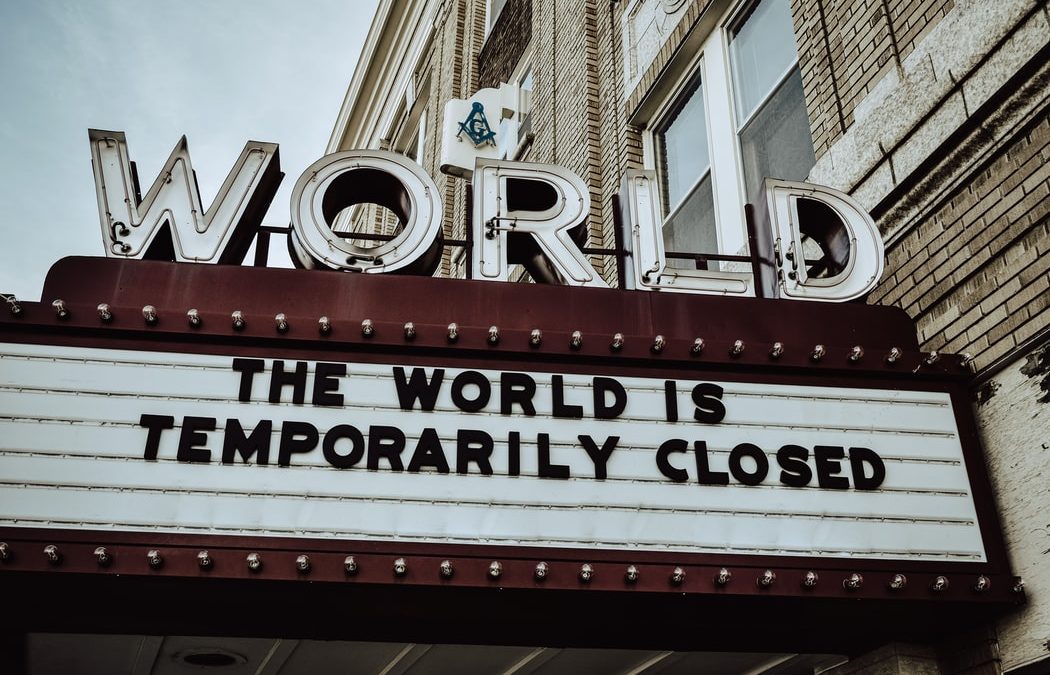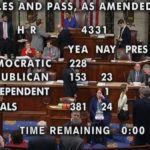 Like many of you, I recently slid into Week 5 of social-distancing, and work-from-home, and self-isolation, and all the other COVID-19 clichés – a strange whirlwind of new norms. And upon my umpteenth sanity walk around my historic Philadelphia neighborhood yesterday, I began to consider my recent personal behavior and responses to this crisis and to wonder what lessons they might hold— specifically what my interactions with some of the key organizations in my daily life may say about the ways nonprofits can react most successfully to the present moment.
Like many of you, I recently slid into Week 5 of social-distancing, and work-from-home, and self-isolation, and all the other COVID-19 clichés – a strange whirlwind of new norms. And upon my umpteenth sanity walk around my historic Philadelphia neighborhood yesterday, I began to consider my recent personal behavior and responses to this crisis and to wonder what lessons they might hold— specifically what my interactions with some of the key organizations in my daily life may say about the ways nonprofits can react most successfully to the present moment.
I should mention that although my colleagues and I have had the chance to team up with many S&W clients in recent weeks and see how they are responding, the thoughts I’m sharing now are not lessons from those interactions, but rather personal reflections.
The more I have walked, the more I have found myself thinking about leadership, rapid response, and urgency, themes many nonprofits might do well to focus on too, as you will see in my experiences these last five weeks.
Week 1: S&W’s president, Scott Schultz, announces that we would be taking every action possible to ensure the firm makes it through this with all current employees intact. At the same time, my husband, John, feels confident he would be unaffected by this as well. (He works in healthcare—enough said.) I remain anxious, but feel some relief.
That same week, several of our favorite restaurants, farmers market and local vendors bombard us with calls to action: Support local business. We need you now more than ever. We need you to be there for us. Their outreach is more than rapid; it’s instant—and most definitely urgent.
In response, we buy CSA shares from surrounding farms, takeout dinners from restaurants that flipped dine-in service to drive-by pick-up, more cheese than we could should ever consume from the farmer’s market, and t-shirts with restaurant logos. By the end of the week, we are so deep in greens that my husband (quietly and with trepidation) asked over his 7th consecutive veggie-packed quiche breakfast and veggie-packed soup lunch, “Perhaps you could ease up on the fiber a bit?”
Week 2: We are still slogging our way through a fridge packed with local goods and leftovers, and at the same time I can’t stop buying something every time I get an email offering some alternative good for sale to support these suffering businesses – as if my $20 purchase was going to make or break them.
John’s had it with the logo t-shirts but relieved I’ve ordered another five pounds of his favorite local coffee beans.
I begin tossing tickets to theatre performances that have gone dark. One of the two theatres we hold season tickets with, which I shall discretely refer to as “Theatre 1,” quickly decided the rest of the season was cancelled and provided several actions ticket holders could take: donation, credit towards a subscription to the upcoming season or general credit to purchase future tickets. Their offer was decisive and timely. I immediately committed to turning our unused tickets into a donation.
Still no word from the other theatre we attend (“Theatre 2”) regarding our unused tickets. Oh, wait! They have emailed. They’re looking for us to re-up our subscription for next year. I’m left wondering when they’re going to make a call on the current season. Clearly the remaining shows will be cancelled. Why don’t they say so? And what our options are for the unused tickets?
Week 3: Our beloved ā café two blocks away, whose mission is to connect generations to combat isolation, particularly with the elderly in the neighborhood, has transitioned all of their regular in-person activities (art classes, conversation groups, etc.) to Zoom. They’re already extremely well-attended. They’ve even been offering daily meals that can be delivered or picked-up curbside and necessity shopping services free of charge to anyone unable to venture out.
Before I could wonder how they are making ends meet, I get an email explaining that they (of course) couldn’t keep the staff on payroll under the current circumstances. They are just not generating the revenue. They include a link to a donation page that explains they could retain their staff for the next month (with the two owners collecting no salary during this time) for just $6,000. I barely finish reading before I hit the button to give. Two days later, they had $9,000, and the donations were still coming in.
They moved quickly to make themselves relevant in our new world. Their owners showed leadership in foregoing their salaries. The response was inspiring.
Week 4: Our new situation is starting to feel oddly normal. We have our routines. My cooking skills have improved exponentially. We’ve found some creative ways to regularly hang out with family and friends.
I’m still following the plight of our local businesses, supporting them in whatever ways we can. Meanwhile, the restaurant in the lobby of our apartment building, having been closed this past month, has now decided to reopen on weekends to service the local neighborhood, particularly residents in our building. Hmm. John and I try to remember how much we liked the place.
Also, still no word from Theatre 2 regarding our subscription. That’s with two sets of tickets now wasted and just one show left in the season.
Week 5: So, what came to mind on my walk yesterday? Well, I was thinking about the nonprofits we serve at S&W and their heroic scrambling to adapt the way they provide services, about the galas and other events they’ve had to cancel, about the miracles they’ve had to work to meet their budgets.
I also thought about what and how they are communicating with their stakeholders. I found myself hoping that organizational leaders, especially board members, are stepping up to take charge, that these leaders are making quick yet sound decisions, and making them with confidence, and, that they are communicating a sense of immediate necessity as they seek support, regardless of how directly connected their missions might be to the crisis.
Why was I hoping for these things? Because I saw a direct connection between my own behavior and my perceptions of our local businesses and the way each has adapted since the crisis began.
Take our favorite café. The owners’ decision to change how they were going to provide goods and services to their constituents was made immediately after the city went on lockdown, without hesitation and without closing their doors a single day. They also wasted no time sharing these changes with their stakeholders and decided they would find a way to keep staff on payroll, making the direct ask for monetary support. Their ask came with a great sense of urgency and a direct tie to what was going on in the external environment.
On the other hand, the owners of the restaurant in our lobby wonder why it hasn’t received any business from residents in the building now that it’s finally reopened. It’s simple: We haven’t heard from them since they closed a month ago, while others have been there for us. They have become our go-to’s.
I could draw the same contrast between Theatre 1, which took care of us as patrons and communicated a need for urgent support, and Theatre 2, which, put quite simply, did not.
Based on my recent experience, I suspect that once the peak of this crisis has passed, those organizations that will travel the road to recovery most successfully will share these attributes:
- Leadership quick to make sound, potentially innovative decisions and unafraid to pivot the organization as needed.
- A rapid response to the new environment and the ability to mobilize staff and volunteers to carry out their missions differently.
- Strong, frequent communication with stakeholders that evokes a clear sense of urgency.
At this point, it is not enough to wait for your already-scheduled spring appeal to reach out to your donors. It’s not acceptable to wait weeks before making a decision about an event next month. And it would be a serious mistake to neglect to revisit your strategic plan and update it for the next 6 months, 12 months, 18 months. Your stakeholders want to see your Plan B; they want to know what your future looks like and how you will get there. And, if you choose to take your time, you may well find that someone else is out there asking your constituents for support and taking care of them in ways you are not.
In short, as my neighborhood proves, this is a time for fast and decisive action. And if your organization’s culture has always been to move deliberatively and methodically, it may also be a time for a culture change.





